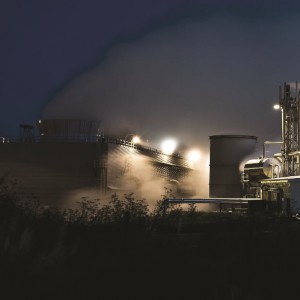Bay of Plenty to the North and Taupo and Wairoa Districts to the south, containing major
resources in one of the world’s most prolific geothermal areas, and fastest growing radiata
pine forests. But it is a region seeking a long term strategy to create more economic value
from its resources than are available from the commodity price cycles for export logs, and
wholesale prices for geothermal electricity generation.
In 2010 NZTE Investment commissioned Australian Climate Economist Ben McNeil – author
of the “Clean Industrial Revolution” – to write a paper on the business case for attracting
energy intensive business investment in New Zealand. This investigation led naturally to
the Bay of Plenty region with its abundance of sustainable forestry and renewable energy
resources and more specifically to Kawerau.
NZTE began investigating Industrial Symbiosis which is an economic model based on
looking for synergies between processes and the recycling of waste streams to capture
multiple sources of value, and thus increased returns on investment.
After a series workshops with stakeholders to explain the symbiosis thinking a coalition
called Industrial Symbiosis Kawerau [ISK] was formed as a regional partnership between
NZTE and Kawerau District Council [KDC]. Kawerau is home to the world’s largest
application of geothermal energy for direct industrial use.
No sooner had the initiative got underway when NZTE had to respond to a major threat of
the possible closure of the SCA Hygiene Australasia Tissue Mill in Kawerau The creative
solution was to gain an indepth understanding of the multinational’s decision drivers
beyond the financials. NZTE, working closely with KDC, was able to showcase and
leverage the sustainability value embedded in geothermal energy.
Importantly, the work and approach taken by the team has provided a blueprint and an investment perspective for how the wider region can cooperate to attract significant investment in businesses that are future focused on value-added, low carbon products that can generate jobs.
A number of projects are being investigated for Kawerau based on these principles
including ‘Stump to Pump’, which is a feasibility study to determine whether it is
commercially viable to convert forestry residues into biofuels at the Kawerau Mill site, and
has partners Norske Skog, Z Energy, and the Ministry for Primary Industries.


